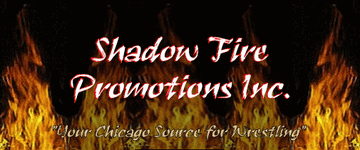
WORLD WRESTLING FEDERATION (WWF)/
WORLD WRESTLING ENTERTAINMENT (WWE)
PROMOTION HISTORY
 | 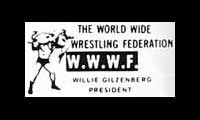 | 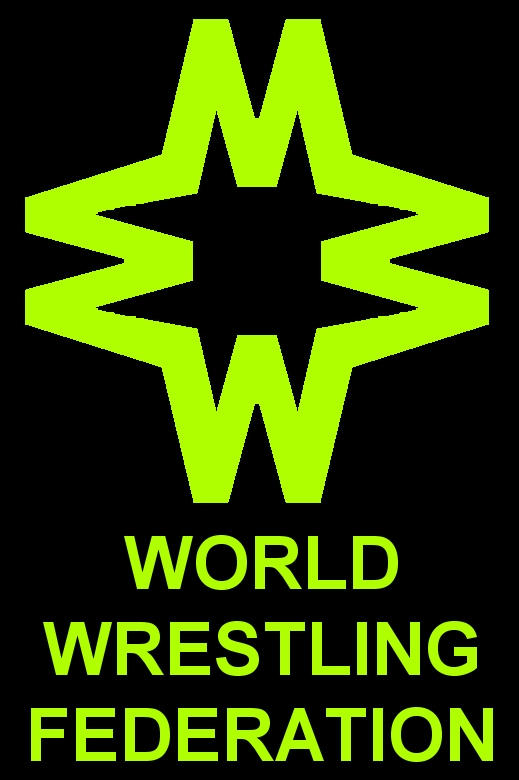 | 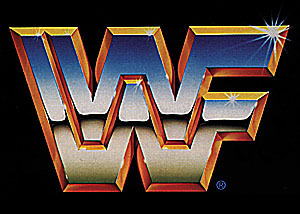 | 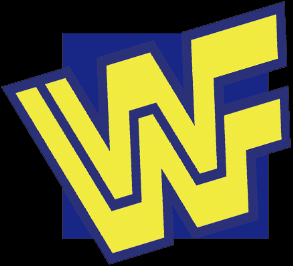 | 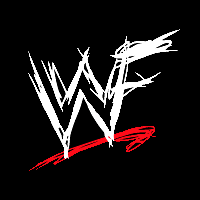 | 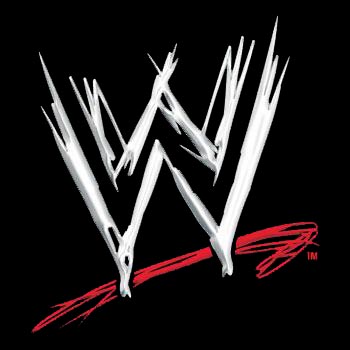 | 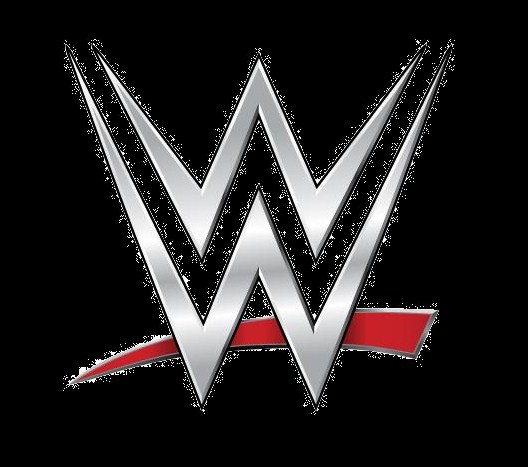 |

 |  |  |  |  |  |  |  |
The company now known as WWE began as National Wrestling Alliance (NWA) member Capitol Wrestling Corporation in 1953.
After separating from the NWA (then the governing body of wrestling) for good in 1963, Vincent J. McMahon (sometimes referred to as Vince McMahon, Sr. to differentiate from his son, current WWE Chairman & CEO Vincent K. "Vince" McMahon, (sometimes referred to as Vince McMahon Jr.), and his business partner, Joseph "Toots" Mondt rechristened their organisation the World Wide Wrestling Federation (WWWF, which, despite the ambitious name, still only promoted events throughout the northeast regional "territory") with "Nature Boy" Buddy Rogers, the recently-dethroned NWA Champion, who had just a short time prior lost the title to Lou Thesz in controversial one-fall fashion (typically, all NWA title matches at that point were best-of-three contests), freeing him to separate from the NWA, as the WWWF's first Champion, having won what is widely believed to be a phantom tournament for the title in April 1963, holding the title for only a month before dropping it to Bruno Sammartino, who would go on to hold it for nearly eight years in his first of two title reigns. The NWA Board of Directors was unhappy with Rogers being booked almost exclusively in the northeast region that McMahon controlled, and voted the title off Rogers, using legitimately tough Lou Thesz as the NWA's insurance that Rogers would drop the title.Despite their separation from the NWA, Vince McMahon, Sr. still sat on the NWA Board of Directors, and as such, while there were several title unification matches, they usually ended in some form of disqualification, ensuring the titles remained separate.
The name was trimmed to the more widely known World Wrestling Federation (WWF) in 1979, a name which the company is still sometimes (erroneously) referred. The corporate name of the company was Capitol Sports Promotions throughout the 1960s up until the 1980s, when Vincent K. McMahon took over the company, merging it with his own company, Titan Sports, Inc. before changing to World Wrestling Federation Entertainment, Inc., World Wrestling Entertainment, Inc., and most recently becoming simply WWE, Inc. Headquartered in Stamford, Connecticut, they have satellite offices in New York City; Los Angeles, California; London, England; Toronto, Canada; Shanghai, China; Mumbai, India; and the Republic of Singapore. They formerly had an office in Tokyo, Japan (WWE Japan, LLC), which was dissolved 1 September 2021.
In 1982, after Vincent J. McMahon sold his share of the company to his son, the younger McMahon proceeded to buy out his father's partners' shares of the company in order to proceed with his plan to become the dominant force in pro wrestling, or as he liked to refer to it as, "sports-entertainment", a term he used to differentiate his "action-adventure drama series" from what he considered to be "sleazy, fake pro wrestling" (or "rasslin'" as he has derisively called it) in order to both gain mainstream respect for his vision and to also be able to eventually branch off into other forms of entertainment, most notably movies.
McMahon accomplished his goal by offering established regional stars the promise of more money than they ever made previously, binding them to the company (classifying them as independent contractors exclusively contracted to his organisation) at a time when any contract at all, was unheard of in wrestling, where wrestlers worked with promoters on handshake agreements, to walk out without notice on whatever promotion they were currently working for to join his WWF, and then proceeding to distribute videos of his new acquisitions to local TV stations, pitting the local hero against his larger than life "WWF SuperStars", and in the process giving his WWF a national audience through videotape (again, something rarely done in wrestling in the early 1980s. Many television shows were not frequently saved on tape until much later, due to costs incurred in storage and preservation.) Televised shows in general were infrequent, used to drive fans to the much more profitable live arena show business. McMahon's colourful "SuperStars" alternatively called "sports-entertainers", "performers", or just "entertainers", (but never "wrestlers") were tailor made for TV, and, as wrestling shows are relatively cheap to air on TV, especially with McMahon paying to videotape his shows for National and International distribution, paying stations to air his shows. Rather than television stations paying for wrestling, as is now the case, it was considered more of an infomercial at the time and stations wanted promoters to pay for television time, which is why wrestlers in that era were not paid for television and also why wrestling on TV aired at later hours when the time was less expensive).
It didn't take long for TV stations nationwide to see the value in WWF programming, choosing McMahon's slicker, glossier programs with the focus on entertainment and specifically creating the shows for television over the local wrestling promotion, effectively putting them out of business, as without TV to drive arena show business, audiences rapidly dwindled to the point where promoters could no longer afford to run shows. Additionally, McMahon made sure to run his WWF in direct competition with local shows. With home video sales driving TV business and live show revenue, McMahon was able to put on a first class product that made rival shows pale in comparison and set the standard for "big time" wrestling worldwide, a standard still in place today. With the confidence that television stations wanted his programming, McMahon was able to turn the tables on how television stations viewed wrestling and now having the stations to pay for his programming, again setting a standard that exists to this day.
Rival promoters knew McMahon was spending money as fast as he earned it to continue luring in talent and keep his shows on the air, and felt that soon enough, he would overspend and be out of business. As a result, few promoters were overly concerned until it was too late. Between television licenses, the cost of keeping open his Coliseum Video distribution company which distributed and marketed his WWF releases (prior to McMahon, wrestling's regional business model was dependent on TV clearances locally to drive arena business, where the money was. Videotaping events for future distribution wasn't needed in the pre-VCR days; fans got their wrestling fix going to arena shows.), the cost of running big shows nationwide, and the talent raid from rival promotions did cause a huge drain on McMahon's finances. Still, despite the rosy picture painted by the WWF, McMahon's finances were approaching critical. However, he had one more trick up his sleeve.
McMahon entered into a partnership with New Japan Pro Wrestling to market several of his top draws overseas, such as Andre The Giant and Hulk Hogan (both overseas draws prior to McMahon signing them). This partnership enabled McMahon to borrow enough money to put on his own supercard, similar to the NWA's Starrcade, which had run annually since 1983. McMahon wanted to do his own show, called "WrestleMania" (named by longtime ring announcer & 2009 Hall of Fame member Howard Finkel), except that WrestleMania would follow the WWF formula of being seen on a national scale, using the fledgling closed-circuit technology (the precursor to pay-per-view) to broadcast it in arenas throughout the country and make it appealing to people who were not wrestling fans. He would achieve this goal by strategic alliances with MTV and NBC. He would have his wrestlers guest star on popular NBC shows, such as The A-Team and Saturday Night Live), and created The Rock n'Wrestling Connection with manager Cap'n Lou Albano having appeared in a music video for Cyndi Lauper and her making appearances on WWF TV, cultivating a feud with Albano that would also involve McMahon's Womens Champion, Wendi Richter, the culmination of which would be settled at WrestleMania. The A-Team's Mr. T, the breakout star of the series, befriended Hulk Hogan and would appear in his corner at WrestleMania, further cementing McMahon's vision of the WWF being a pop culture phenomenon that "everyone was watching", a key concept in getting non-wrestling fans to tune in to WrestleMania.
With a significant portion of his finances tied up in the creation and promotion of WrestleMania, McMahon knew failure was not an option if he wanted to keep his company from bankruptcy. It was a risky proposition, trying to convince fans to pay a significantly higher amount of money to see his show on pay TV, and in keeping his top stars off the road in the weeks and months prior to WrestleMania to keep interest in them high, it left some fans disgruntled at not being able to see the most popular WWF SuperStars in person. Despite sluggish initial buys for WrestleMania causing some initial concern within the company, a last minute surge provided relief for the company as a whole, and a resounding success for WrestleMania as a concept. Rival promoters, realising WrestleMania would tell the story on the WWF were naturally severely disappointed over its success, as it would mean the death of pro wrestling as they knew it, and the emergence of McMahon's version of pro wrestling, "sports-entertainment".
During the next several years, with Hulk Hogan at the top of the card, the WWF enjoyed a continual stream of success for nearly ten years. Although Hogan took off for a year in 1990, the WWF continued its stream of success by Hogan's embracing of the Ultimate Warrior as his successor upon Warrior's defeat of Hogan for the WWF Championship at WrestleMania VI. When the Ultimate Warrior dropped the title early the following year, it allowed Hogan to return at the top of the card and resume his role as "America's Hero", that the WWF marketing machine assisted in creating.
However, by 1992, wrestling as a whole was beginning to slow down after eight years of unprecedented popularity. Towards the mid-1990s, wrestling's fortunes in general, and the WWF's fortunes in particular, took a turn for the worse as Vince McMahon was indicted on charges of steroid distribution. Certainly many fans as well as distractors could see the large amount of muscular bodybuilder-style physiques in the WWF, so that during this time, the WWF slowly began to phase out these huge, overly muscular bodies, replacing them with less sculpted, more athletic wrestlers, most notably Bret Hart and Shawn Michaels, both of whom would be major figures in the promotion for the next several years. In addition to the charges of steroid distribution alleged against McMahon, he also had to contend with allegations of sexual harassment levied against the company by former ring attendants. In the wake of these scandals, business continued to drop. Although Vince McMahon publicly brushed off the charges, several performers and office personnel found themselves either out of work, or working at a significantly reduced rate of pay as the McMahon family and the WWF spent a significant amount of money in defence of these charges. Although McMahon was eventually exonerated of all charges, it was a public relations nightmare for the company.
Business for the WWF would continue to decline for years afterward, with several wrestlers jumping to the now Ted Turner-owned World Championship Wrestling (WCW), (the successor to Jim Crockett's NWA Mid-Atlantic Championship Wrestling), where they were playing the WWF's old strategy of offering substantial guarantees to wrestlers to get them to leave the WWF, in order to convey the impression to fans that WCW was "the hottest place to be" and "everyone is leaving the WWF". The most notable wrestler to jump early on was Hulk Hogan, who surprised everyone by leaving the company where he enjoyed his greatest successes, but Hogan allegedly felt he should continue to be main eventing for the WWF as he had been for the past ten years, while McMahon wanted to focus on his "New Generation" of wrestlers, having Hogan occasionally wrestle, but no longer a full time wrestler, nor a full time headliner. Shortly thereafter, another "big name" from the previous decade, Randy Savage, also left, similarly unhappy with his role as an announcer, feeling he, too, still had something to offer in the ring. WCW felt that these wrestlers still had great name value and could be used in "dream matches" against several of WCW's own stars, such as Sting, whom neither man had ever wrestled previously, or Ric Flair, who although previously in the WWF, was never matched against Hogan on pay-per-view, and Savage, who was to rekindle their previous WWF feud.
With the WWF's fortunes still on the decline, McMahon had no choice but to let his top stars go, and in an unprecedented move, McMahon not only openly acknowledged his rival company, but publicly mocked them in several skits, while attempting to push the idea to the mainstream media that billionaire Turner was using stock holder funds to deliberately attempt to put McMahon's "small, family owned company" out of business. Many insiders and business rivals mocked McMahon's pleas as "crying wolf", as the tactics used were no different than what McMahon himself had done during the 1980s while attempting to bring the WWF on a national scale.
Despite the exodus of talent from the company, the WWF still soldiered along with the same plan that had brought them the most success -- cartoony gimmicks and an overall "family-friendly" product, but were beginning to show the signs of change with the "Billionaire Ted" skits lampooning Ted Turner as well as Hogan and Savage, poking fun at the age and in-ring abilities of his former wrestlers while calling attention to the athleticism and excitement of the "WWF New Generation", more female managers, some of whom were hired strictly for their looks, and overall edgier in-ring personas of the wrestlers. Previously, the WWF would not acknowledge any other promotion.
This gradual change in the WWF's style of promotion was a direct result of Ted Turner's WCW presenting a more mature product, with wrestlers attacking women, cursing, and in-ring personas that were a closer reflection of their real selves.
When WCW's TV show, airing at the same time as the WWF's, began to take similar potshots back at the WWF, McMahon turned up the heat even more at the 1996 King of the Ring pay-per-view event.
Former WCW and (then) current WWF mid-card wrestler Steve Austin became the beneficiary of an incident that had scheduled King of the Ring winner Hunter Hearst Helmsley pulled from the card. "Ringmaster", as Austin was known, received a "gimmick makeover" at his request to abandon his current name and persona to adopt a meaner, "tough guy" gimmick dubbed "Stone Cold" by his then-wife, Jeannie (known in WCCW as Jeannie Clark and Jeannie Adams and in WCW as Lady Blossom).
Austin had lobbied for a makeover of his in-ring persona for several months prior, hoping for something more memorable than his current name and gimmick. Seeing a television show profiling serial killer Richard Kuklinski (known as "The Iceman"), while flipping channels at home, he decided he wanted his new attitude to have a similar personality: cold and ruthless. In the WWF tradition of the time, he was given a list of "temperature-based" names such as "Ice Dagger", "Fangs McFrost", "Chilly McFreeze", and "Otto Von Ruthless" among others, which frustrated Austin that the WWF clearly did not understand what he was looking for and wasn't able to come up with an appropriate name to fit his new gimmick. When Jeannie had told him to drink his tea before it became stone cold, a name would come. Both immediately hit upon the phrase "stone cold" and knew it would be his name: he would be "Stone Cold" Steve Austin. As Stone Cold, Austin would put the final nail in the coffin of the WWF's family-friendly era, and begin the "WWF Attitude Era" with his post-win speech against Jake "The Snake" Roberts, who had found religion in his time away from the ring, that created a catch phrase that would kick start merchandising for Austin as well as a new boom period for wrestling.
With WCW still running their show head to head on Mondays, the established day of wrestling since the WWF's "Monday Night RAW" show began in 1993, the "Monday Night War" with the WWF broadcasting more violence, swearing, and edgy storylines to compete against their rival, and also attract youthful viewers that might never have seen wrestling prior, but were captivated by the adult content, with McMahon fully aware that he could air a lot more mature content in his broadcasts than Turner could in the "Bible Belt" of WCW headquarters in Atlanta, Georgia.
Despite all this, WCW was still winning television ratings, with both sides continuing to take potshots at one another, and wrestlers continuing to jump sides. After 12-year WWF veteran Bret Hart was "screwed" on pay-per-view in an unplanned incident, losing his WWF World Championship, which he had won mere months earlier, in a famous (or infamous) incident referred to as the "Montreal Screwjob" and jumped to rival WCW, many fans felt that the WWF might never recover, but the company held its own, with owner Vince McMahon taking a spot in the on-camera storylines in a way he never had previously as "Mr. McMahon", an evil dictator who openly flaunted his ownership of the company to favour certain wrestlers and "screw" others. It wasn't until 1998 that the WWF's fortunes began to reverse, and ironically, WCW gave the WWF the ammunition they needed to return to the top.
In the trend of WCW revealing the results of taped WWF shows to entice more viewers to stick with their live Nitro show, the broadcast team was instructed to announce that Mick "Mankind" Foley, who competed for WCW as Cactus Jack, was to win the WWF Championship, sarcastically commenting that Foley's win would "put some butts in the seats". Almost immediately, hundreds of thousands of fans would change the channel to the WWF to watch Foley's win. The WWF won the ratings that night and never looked back.
On the back of the success of the "Attitude Era", on October 19, 1999 the WWF's then-parent company, Titan Sports became a publicly traded company, offering ten million shares priced at $17 each. With the announcement of their initial public offering, the WWF announced its desire to diversify their brand, to include creating a nightclub in Times Square (WWF New York/The World), producing feature films (which they had been doing since the mid-1980s), book publishing, and a pro football league (the XFL). While not all of these ventures enjoyed financial success, the WWF had enough money from stock purchases and revenues from their wrestling product that the financial losses suffered didn"t have serious effects on their finances. Also, with the ratings success of the RAW programme, the WWF was able to introduce a second show in prime time on Thursday nights, called "SmackDown", a phrase used by one of the company's top wrestlers of the era, The Rock (Dwayne Johnson). WCW followed suit in an attempt to compete, introducing their own second show, again on a Turner-owned network, giving them more freedom of when the show could start and end. The show would soon move from Thursday nights to Wednesday nights due to pressure to keep their audience, which was already being slowly taken by the WWF. The SmackDown show became another resounding success for the WWF, despite initial concerns that fans may suffer from too much wrestling. Although SmackDown is clearly the "B" show, it still did better than expected by both internal and external analysts.
Meanwhile, WCW's financial situation deteriorated significantly in the wake of their competitor's vast successes, and Ted Turner was no longer able to save the company as the newly-merged parent company, AOL-Time Warner, which acquired all Turner programming, decided to close the company that had aired on Turner-owned stations for over twenty years, and in 2001, the WWF acquired their long-time chief rival for an undisclosed amount, reported to be around $7 million. On March 23, McMahon trumpeted his greatest triumph over his rival of nearly twenty years by having the major storyline from RAW carry over on WCW's Nitro show, with Vince's son Shane appearing on the simulcast programme in Florida (where Nitro was broadcast), and Vince gloating in Cleveland (where RAW originated). Although the storyline failed to produce many of the dream matches fans sought, it opened the door for a new business model for WWF television programming.
Less than a month after the acquisition of WCW, the other major North American wrestling promotion, Extreme Championship Wrestling (ECW), was also forced to permanently close their doors. ECW had difficulty keeping their frequently violent and often controversial show on television, and their cable deal with TNN (the former Nashville Network, The National Network, Spike, and now The Paramount Network) turned out to be disastrous, as TNN spent little to advertise the show, only airing commercials for the promotion on ECW TV, and pushing their own lower-rated show, Rollerjam, instead. TNN also expected ECW to have a similar high-glitz look to their shows as rivals WWF and WCW had, despite not providing the company with the necessary funds to establish such, nor understanding that the appeal of ECW was its "rough" or "underground", "counter-culture" look. ECW was also handcuffed in other ways by TNN, not allowing certain signature elements of the show to be aired and heavily editing elements that were allowed to air. The final nail in ECW's coffin was when the WWF left its longtime cable home on the USA Network to appear on TNN, and their exclusivity clause would demand ECW be bumped. Although TNN and ECW had a contract, TNN had a clause allowing them to cancel the show if it fell below a certain ratings mark (which ECW never did, despite the lack of promotion for the show. In fact, it was TNN's highest rated show), the WWF allowed ECW to stay on TNN until they found a suitable television home for their shows. However, despite loans from the WWF, revenue from pay-per-view companies, video game deals, and other merchandising, funds simply did not come in fast enough to save the company, and there was no other option but to declare bankruptcy and fold.
After the acquisition, with the influx of former WCW and ECW talent, McMahon introduced a "brand extension", with some wrestlers appearing on RAW, others on SmackDown.
ECW's popularity led McMahon to do something unprecedented, and allowed former ECW visionary Paul Heyman (the former Paul E. Dangerously) to book a "reunion show" of sorts, dubbed ECW One Night Stand. On the success of One Night Stand (originally intended to be just one night; a way for the fans to say goodbye to the wildly popular outlaw promotion that had changed the face of modern wrestling), McMahon created another One Night Stand, this one closer to his own vision of sports-entertainment. Although not as popular as the first One Night Stand, long-time ECW favourite Rob Van Dam finally captured the WWE Championship at the event. With dual successes under his belt, McMahon made the bold decision to revive ECW, not as a separate promotion (as had been the initial plan for WCW) but as a separate brand under the WWE banner, joining RAW and SmackDown. Although many ECW "Originals" were hired for the new brand, it quickly became "just" another brand of WWE, with minimal differences from their other shows. ECW survived as a WWE brand, although clearly a distant third in the WWE brand hierarchy, and on February 2, 2010, Vince McMahon announced that a new weekly programme would replace the soon-to-be cancelled ECW show in its time slot on Syfy (formerly the Sci-Fi Channel). McMahon would describe the show as "the next evolution of WWE; the next evolution of television history", and two days later, on WWE Superstars, the new show's name was announced as WWE NXT, with a press release made later that day detailing the format, which follows the progress of WWE developmental wrestlers as they work to earn a spot on either the RAW or SmackDown rosters, while being coached or mentored in their quest by current WWE SuperStars. NXT would soon become the name of WWE's in-house developmental territory, working with the WWE Performance Center and becoming another touring brand of WWE.
A Hall of Fame was introduced in 1993 with the induction of WWF alumnus Andre the Giant, who had died earlier that year, and continued to induct additional members annually until 1996, when the Hall of Fame went dormant, until it was finally revived in 2004 to coincide with WrestleMania XX, and continues as an annual event during WrestleMania weekend, with the ceremonies filmed for DVD distribution.
Since living inductees appear at a Hall of Fame acceptance event, induction is contingent on being on good terms with WWE. As a result, several notable alumni either have not been inducted, or have only been inducted upon mending fences with the McMahon family, such as Bruno Sammartino, who held the WWWF Championship for nearly 13 years, and refused to appear at a Hall of Fame induction ceremony due to personal hard feelings toward owner Vince McMahon & his criticism of the WWE product, before finally agreeing to be inducted in 2013, after being convinced that WWE's product has changed, and Randy "Macho Man" Savage, who held the WWE Championship for two reigns, one for just over a year, the other for just under a year, remained un-inducted until 2015. Randy's brother, Lanny (known in the WWF as "The Genius" or "Leaping" Lanny Poffo) has stated that it was always Randy's wish to have his entire family inducted at once, similar to how the Von Erichs were inducted as a family. In 2013, two years following Randy's passing, Lanny publicly stated he will go against his late brother's wishes, and allow WWE to induct Randy on his own, but wants no part of the ceremony if WWE elects to do such (their father, Angelo Poffo, was a famous wrestler in the 1950s under his real name, who was inducted into the WCW Hall of Fame in 1995).
Randy was finally announced as the first inductee into the WWE Hall of Fame, Class of 2015, although there is speculation that the only reason he was inducted was due to Steve Austin directly asking Vince McMahon when Randy will be in the Hall of Fame during his Steve Austin Show podcast, shown live on the WWE Network. Nonetheless, curious selections such as The Iron Sheik, and undercard wrestlers Ivan Putski, Koko B. Ware, Johnny Rodz, Rikishi, comedy tag team The Bushwhackers & "celebrities" have been inducted prior. While several inductees are popular and familiar names to wrestling audiences, their WWE legacy or impact in wrestling is debatable as WWE rarely acknowledges accompllishments outside the company.
Critics of the Hall of Fame have called it a farce because there is no actual "hall" you can visit (although WWE has investigated potential locations in the past), in addition to wrestlers with less than memorable careers and non-wrestling celebrities such as former Cincinnati Reds baseball player Pete Rose, former Chicago Bears linebacker William "The Refrigerator" Perry, movie star Arnold Schwarzenegger, and actor/comedian Drew Carey are inducted (albeit in an honorary "celebrity wing"), despite having little impact in WWE or wrestling in general. Although in theory the Hall of Fame honours those with important WWE careers, the process by which inductees are selected is unrevealed. Inductees such as Harley Race, Verne Gagne and Nick Bockwinkel achieved much or all of their success outside WWE, although the wrestling promotions where they did achieve their successes are now part of WWE via assimilation. Others may not have had the most glorious or successful careers, or are even a widely recognised name, but rather they were or are close to the McMahon family and/or have spent a significant portion of their career in WWE. Still others are inducted to the Hall as a concession when they sign over the rights to their tape library to WWE, such as Verne Gagne, whose son, Greg, (also a former American Wrestling Association (AWA) wrestler) was allegedly given a job in then-current WWE Developmental Territory, Ohio Valley Wrestling (OVW), as part of the incentive for his father to sign over the rights to the AWA tape library.
As WWE sells tickets to the Hall of Fame and films the events, despite the stated purpose of honouring those with significant wrestling careers, it is a profit centre for the promotion. Without any oversight regarding the selection of inductees, it can be inferred that selections are made based on whom WWE believes would be recognisable names that would sell tickets.
A lawsuit filed in the year 2000 from the World Wildlife Fund (the other WWF, now known as the World Wide Fund for Nature), stemming from an agreement signed in 1994 by McMahon where he agreed to certain guidelines regarding the use of the "WWF" acronym outside of North America (not realising at the time what kind of impact the Internet would have in the future) was settled in 2002, and the company was forced to abandon the WWF name, and would subsequently change its name to World Wrestling Entertainment, Inc., or WWE. This forced the company to issue new licensed merchandise with the new WWE logo, and discontinuing anything with the old logo. (Although the 1980s block logo and the "New Generation" logo are allowed to be used freely, and the WWF "scratch" logo in "limited circumstances" that have not been defined, the company prefers using their current logo.) During this time, to promote the name change, WWE ran an ad campaign, "Get The "F" Out". Although the ad campaign was designed to humourously promote the name change with the company's signature "attitude", brushing off the name change as more "in line" with the company's overall focus (sports-entertainment, as opposed to wrestling; and the desire to branch into other forms of entertainment), merchandise re-branding and associated court costs ended up costing a great deal. Oddly enough, given McMahon's preference to calling his product "sports-entertainment" instead of "wrestling", when he had the chance to re-brand his product, he chose to keep the name "wrestling" in it, claiming it was an integral part of the company's identity. However, on April 7, 2011, World Wrestling Entertainment issued a press release stating they were officially rebranding the company as simply WWE (which will no longer be an acronym, although the corporate name remains officially "World Wrestling Entertainment, Inc.") as part of the company's continuing efforts to brand the company as a global entertainment entity, which includes discontinuing the term "sports-entertainment" in favour of the simpler term, "entertainment".
Starting in 2014, numerous former WWE talent or their Estates filed multiple lawsuits against WWE alleging that WWE did not protect them and hid information from their talent about concussions and CTE. The former talent claimed physical and mental health issues as a result physical trauma they experience in WWE.A US District Judge dismissed many of the lawsuits in September 2018. In September 2020, the lawsuits were dismissed by the United States Court of Appeals for the Second Circuit. The Supreme Court of the United States subsequently declined to hear the case in April 2021
Vince McMahon would retire from all of his positions in WWE on July 22, 2022, in the wake of several scandals involving him and his leadership of the company, leading to a leadership change at the top of the company for the first time since his purchase of the company from his father in 1982.
On January 6, 2023, McMahon, as primary shareholder in WWE, Inc. filed papers with the Securities and Exchange Commission to resume his role as Executive Chairman, with his first duty as majority shareholder being the replacement of three members of the Board of Directors, with two others resigning, including his daughter, Stephanie McMahon.
On April 3, 2023, Endeavor Group Holdings, Inc., who had been assisting WWE with backend streaming services for their WWE Network since 2019, announced (with WWE) that they had successfully purchased WWE, merging it with the Ultimate Fighting Championship (UFC), whose parent company, Zuffa, had been acquired by Endeavor in 2016, to form a new, publicly traded company. Although the twe brands are owned by the same entity, they will be run separately. This merger will mark the first time that WWE is majority owned by an outside entity and not the McMahon family.